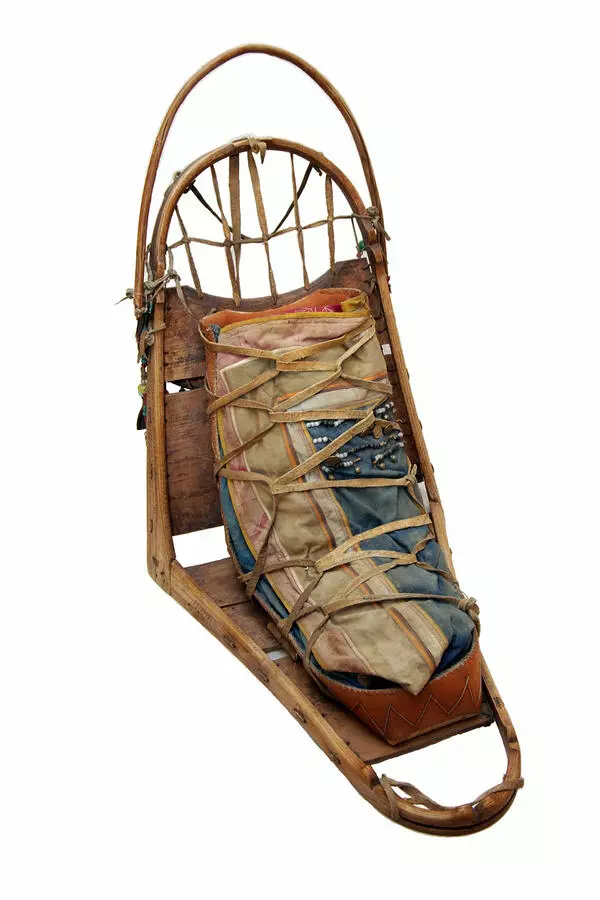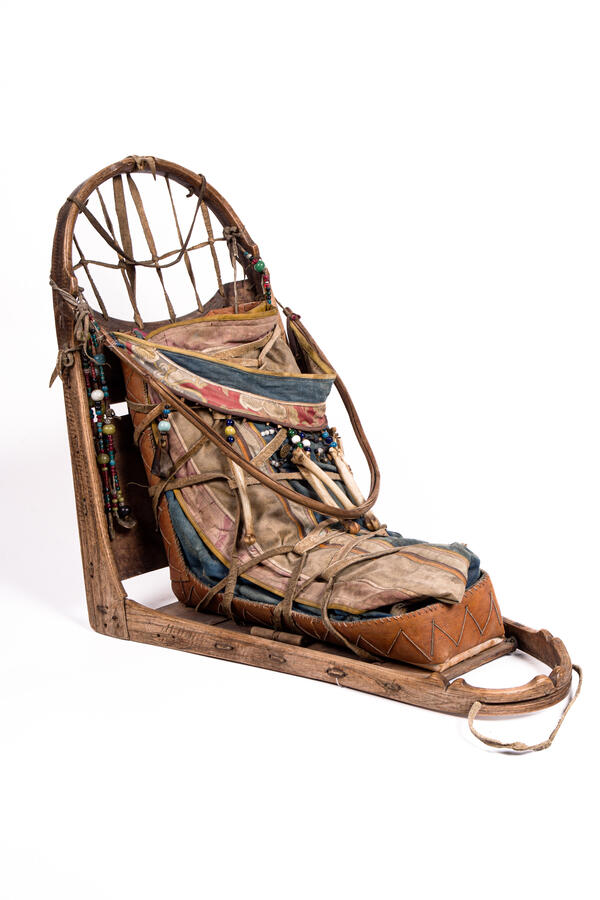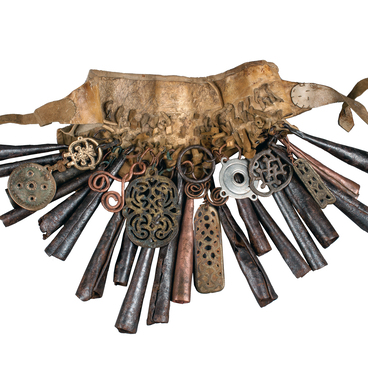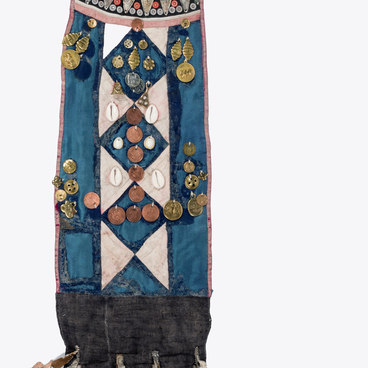For the Udege people, the birth of a child was always a joyous event, for which they carefully prepared. In order to protect the future member of the family, parents observed many prohibitions. For example, a pregnant woman had to strictly adhere to the rules: she was forbidden to do hard work, eat bear meat, and touch the hunter’s things. The husband was not allowed to go out hunting or fishing during the birth of the child, not even to come close to fishing gear.
The cradle for the firstborn was not prepared in advance. The baby was usually laid on the lid of a birch-bark box or in a soro plate during the first days. Before that the surfaces were covered with shavings of rotten osier, ground into powder. Some cloth was laid on top, and the bottom was covered with musk deer fur.
After the child was born, the grandfather or father made cradles of different sizes and purposes: day cradles, like the one on display, and night cradles, made of wood and birch bark. If the child grew up healthy, the cradle was preserved for the next children in the same family.
Numerous prohibitions and rituals were observed in the family to preserve the life and health of the child. According to local beliefs, it was not allowed to rock an empty cradle: an evil spirit was believed to be able to take the child’s place.
In an attempt to protect the cradle from the tricks of evil spirits, protective amulets were suspended from the cradle, such as claws and fangs of animals and birds, snake skins, and hedgehog needles. It was believed that the soul of animals could reside in the tip of their noses, in their hair, claws and, as a good spirit would protect them from evil spirits.
The functions of amulets were not limited to this. There is a more ancient idea that such objects could pass on some of the qualities of the animal to the child: lynx bones gave the future hunter tenacity, sable bones made him nimble at night, and otter bones helped him to be a successful fisherman and dexterous on the water, badger bones could teach him to find food.
Among the Orochi people,
the lynx was especially revered as a noble animal. In order for a boy to become
a good hunter in the future, talismans made of various bones were hung over his
cradle. The parents believed that in the future he would catch the animals the
bones of which were hanging on the cradle.







